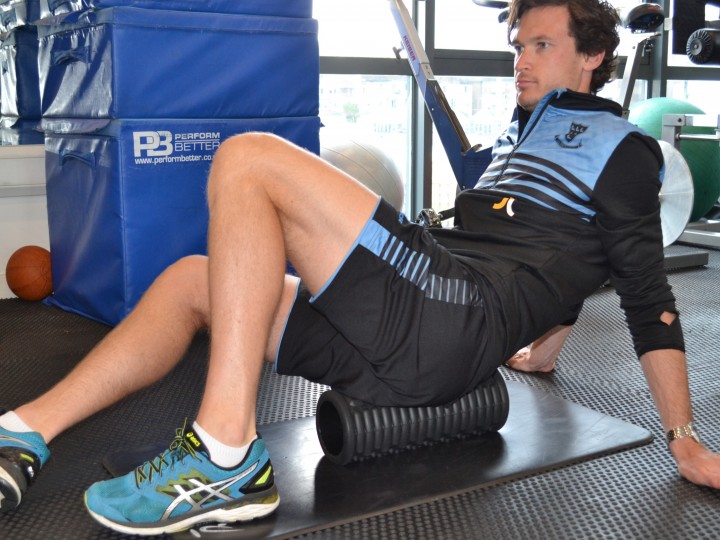Physio Science – Concussion Assessment Guidelines
As Concussion Assessment Guidelines continues to become a concern across many codes of contact sport around the world, many international sporting bodies have published clear guidelines regarding how concussions should be assessed and managed.
These guidelines reflect the current practice of how concussions are assessed at the elite levels of sport. They state some very important considerations, which any therapist should have at the forefront of their mind when managing an athlete suspected of concussion. Below is a summary of current guidelines.
When to remove an athlete
The Pocket SCAT5 is often the assessment tool used to recognise concussion. Further to this tool, there are other criteria an athlete must meet to allow them to continue playing after a head impact. A head injury assessment comprises the criteria for assessing whether someone should be removed from play.
What Constitutes a Head Injury Assessment (HIA)?
- Confirmed or suspected loss of consciousness
- Convulsion
- Tonic positioning
- Balance Disturbances
- Player not orientated to time, place or person.
- Clearly dazed
- Definite confusion
- Definite behavioural change
- On field identification of sign or symptoms of concussions
- Occulomotor signs (spontaneous nystagmus)
The majority of these signs and symptoms are covered by a SCAT5 assessment and this is still the assessment of choice within the first 48 hours following a head impact.
Concussion cannot be excluded until 48 hours post head impact
World Rugby has implemented a 3-step assessment protocol called Head Injury Assessment 1 (HIA1), HIA 2 and HIA 3. These assessments are completed at the following time points:
- Immediately following the impact (HIA1)
- Within 3 hours of the impact (HIA2)
- Within 36-48 hour of the impact (HIA3)
If at any point in time, an athlete does not pass an assessment, they are deemed concussed. The fourth criteria, is if there is a clinical suspicion of concussion at any point in time.
It is now recognised that the timing and variability of symptom presentation, following a head impact means that a concussion cannot be excluded within the first 48 hours following a head impact.
In which circumstances should a doctor be consulted?
A concussion can only be diagnosed or excluded by medical assessment. The progression of symptoms following a head impact is highly variable and can result in catastrophic consequences. It is regarded by many international sporting bodies, that a medical assessment is a vital step in excluding the presence of a Traumatic Brain Injury. Although there are some red flag signs, which indicate urgent medical attention is required, all athletes who are suspected of having sustained a concussion should consult a doctor, as per the Return To Play guidelines.
Red Flag signs of a deteriorating concussion.
- Deteriorating level of consciousness
- Progression of any symptoms
- Worsening head ache
- Increasing confusion
- Vomiting
- Abnormal postural controlPresence of Cushing’s Triad
- Reduced Heart Rate
- Increased/Irregular Breathing rate
- Increased Blood Pressure
- Reduced pupil reaction to light
- Development of any signs of neurological deficit.
How many concussions are too many?
Although symptoms of concussion can resolve quickly, it is now recognised that a single head impact can have severe long-term consequences. Research is continuing to support the link between repeated head impacts and the development of conditions such as dementia, Alzheimer’s, Parkinson’s disease and chronic traumatic encephalopathy (CTE).
Current World Rugby guidelines state “Players with a history of two or more concussions within the past year are at greater risk of further brain injury and slower recovery and should seek medical attention from practitioners experienced in concussion management before return to play”
The first 24 hours of monitoring post-concussion.
World Rugby guidelines advise that an athlete suspected of concussion:
- Should not be left alone
- Should not consume alcohol
- Should not drive a car
Beyond these guidelines, complete mental and physical rest is advised to help resolve the symptoms of concussion. The duration of this rest period is determined by the age of the athlete.
Acknowledgements
This document has be prepared by consulting the following resourced
- RFU RTP http://www.englandrugby.com/mm/Document/MyRugby/Headcase/01/30/49/57/returntoplayafterconcussio n_Neutral.pdf
- RFU Assessment of suspected concussion http://www.englandrugby.com/mm/Document/MyRugby/Headcase/01/30/49/51/assessmentofsuspectedcon cussion_Neutral.pdf
- WR concussions guidelines http://playerwelfare.worldrugby.org/concussion
- Raftery M, Kemp S, Patricios J, Makdisi M, Decq P (2016) It is time to give concussion an operational definition: a 3-step process to diagnose (or rule out) concussion within 48 h of injury: World Rugby guideline, British Journal of Sports Medicine 2016 50:11: 642-643
- The Brain: Issue One Concussion – available from the Queensland Brain Institute – www.qbi.uq.edu.au





